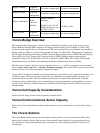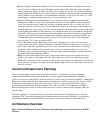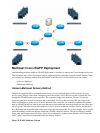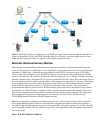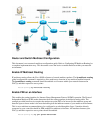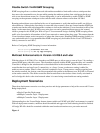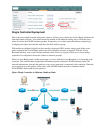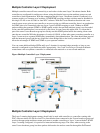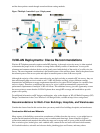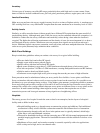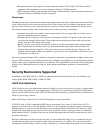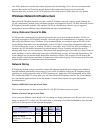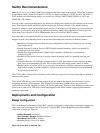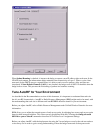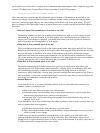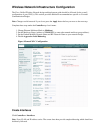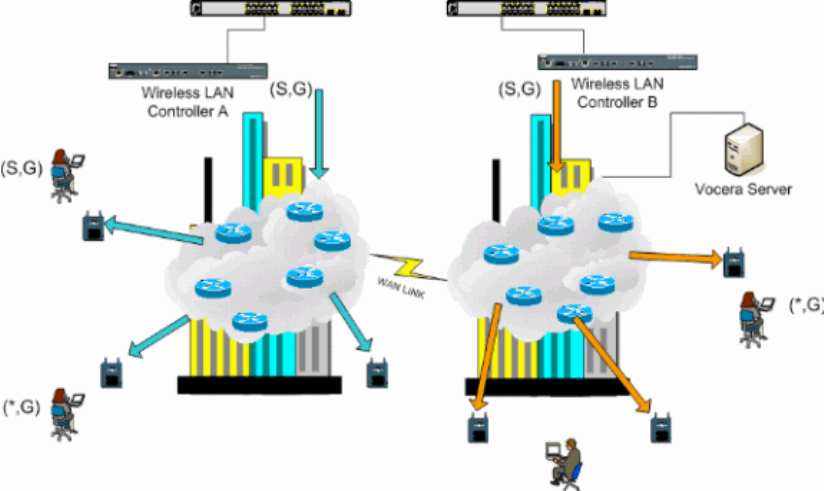
and has these packets routed through normal multicast routing methods.
Figure 7Multiple Controller Layer 3 Deployment
VoWLAN Deployments: Ciscos Reccommendations
Wireless IP Telephony networks require careful RF planning. A thorough voice site survey is often required
to determine the proper levels of wireless coverage and to identify sources of interference. Access point
placement and antenna selection choices can be greatly eased with the help of the results of a valid voice site
survey. The most important consideration is the transmit power of the wireless phone. Ideally the phone learns
the transmit power of the access point and adjust its transmit power to that of the access point.
Although the majority of the wireless networks today are deployed after an extensive RF site survey, they are
done with keeping data service in mind as well. VoWLAN phones are likely to have different roaming
characteristics and different coverage requirements than those of a typical WLAN adapter for a mobile client
such as a laptop. Therefore, an additional site survey for voice is often recommended to prepare for the
performance requirements of multiple VoWLAN clients. This additional survey gives the opportunity to tune
the access points to ensure that the VoWLAN phones have enough RF coverage and bandwidth to provide
proper voice quality.
For additional information on RF design considerations, refer to the chapter on WLAN Radio Frequency (RF)
Design Considerations in the Cisco Wireless LAN Design Guide, available at http://cisco.com/go/srnd.
Recommendations for Multi−Floor Buildings, Hospitals, and Warehouses
Consider the factors listed in this section when you survey multi−floor buildings, hospitals, and warehouses.
Construction Methods and Materials
Many aspects of the building construction are unknown or hidden from the site survey, so you might have to
acquire that information from other sources (such as architectural drawings). Some examples of typical
construction methods and materials that affect the range and coverage area of access points include metallic
film on window glass, leaded glass, steel−studded walls, cement floors and walls with steel reinforcement,
foil−backed insulation, stairwells and elevator shafts, plumbing pipes and fixtures, and many others.



